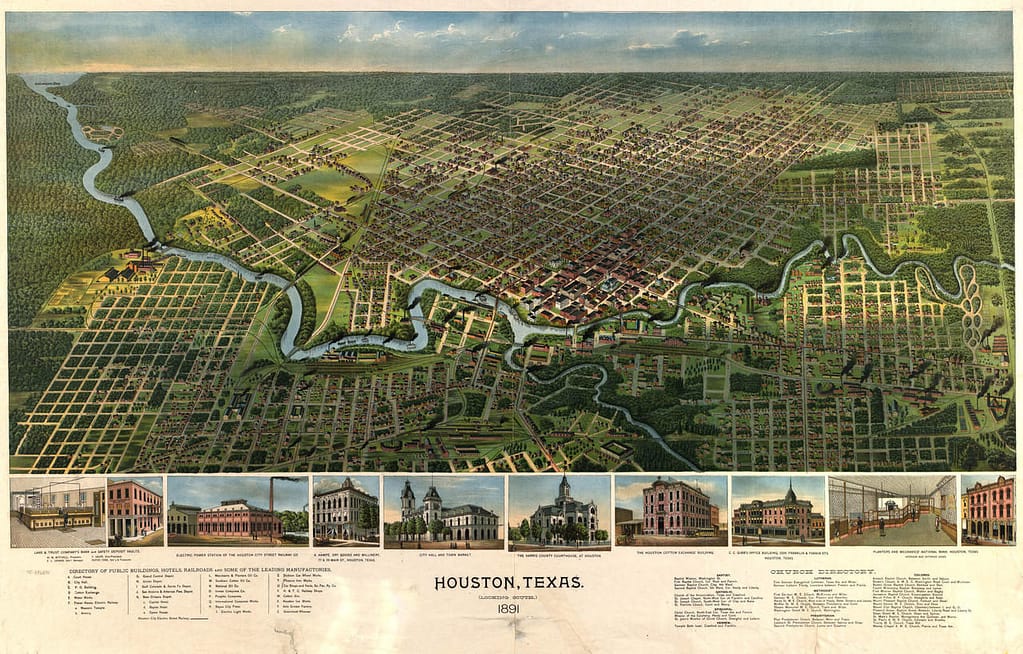Houston, Texas, known today as a bustling metropolis and cultural hub, has a rich history that dates back to the 19th century. Understanding the establishment of Houston provides insight into the city’s growth and significance within the broader context of Texas and American history.

The Founding of Houston
Houston was officially founded on August 30, 1836, by brothers Augustus and John Allen, who were land speculators from New York. The city’s creation came during a time of significant change and upheaval in Texas, as the region was striving for independence from Mexico. The Allen brothers recognized the strategic advantages of the site they chose for their new town, which included proximity to the Buffalo Bayou, providing access to vital transportation routes and resources.
The Allens’ vision was to create a bustling commercial center, and they named the city after Sam Houston, the hero of the Texas Revolution and the first president of the Republic of Texas. Their hopes for the city’s success were not misplaced, as Houston would soon become a pivotal location for trade and commerce in the newly formed republic.

Sam Houston (1793 – 1863)
Early Growth and Development
In its early years, Houston grew rapidly due to its advantageous location. The Buffalo Bayou served as a natural highway, allowing goods to be transported easily to and from the Gulf of Mexico. The city quickly attracted settlers, traders, and entrepreneurs who were drawn by the promise of opportunity and prosperity.
By 1837, just a year after its founding, Houston was incorporated as a city. The population surged, and various businesses began to spring up, including shops, saloons, and hotels, catering to the needs of the growing community. The city became the temporary capital of the Republic of Texas from 1837 to 1839, further solidifying its importance in the region.
Challenges and Setbacks
Despite its rapid growth, Houston faced several challenges in its early years. The city’s location near the bayou made it vulnerable to flooding, which would become a recurring issue in its history. Additionally, competition from nearby Galveston—an established port city—threatened Houston’s ambitions to become the primary trade center in the region.
The city’s growth was temporarily stunted during the late 1830s and early 1840s as political and economic instability affected the Republic of Texas. However, Houston’s resilience shone through as it adapted to these challenges. The arrival of the railroad in the late 1840s would ultimately prove to be a turning point for the city, connecting it to other major markets and facilitating further growth.
The Rise of Houston as a Major City
The mid-19th century saw Houston emerge as a significant commercial and cultural center. The city was officially reincorporated in 1840 and, over the next few decades, continued to expand rapidly. The construction of the Houston and Texas Central Railway in the late 1850s opened new trade routes and made it easier to transport goods to and from the city.
By the end of the 19th century, Houston was firmly established as a major city in Texas, known for its diverse economy and vibrant community. The discovery of oil in nearby Spindletop in 1901 catalyzed Houston’s transformation into an industrial powerhouse, attracting thousands of new residents and businesses to the area.
Houston Today: A Legacy of Growth and Innovation
Today, Houston is the fourth-largest city in the United States, known for its diverse population, thriving economy, and cultural richness. The city has become a global hub for the energy, healthcare, and aerospace industries. Its history of innovation and resilience, rooted in the events surrounding its establishment, continues to shape Houston’s identity.
The Houston Metropolitan Area now boasts a population of over 7 million people, reflecting the city’s status as a major destination for immigrants and a center for cultural exchange. The legacy of the Allen brothers’ vision lives on, as Houston continues to expand and evolve, remaining a vital part of Texas and American history.
Conclusion
The establishment of Houston, Texas, in 1836 marked the beginning of a remarkable journey for a city that would face many challenges yet rise to become a global leader in commerce, culture, and innovation. From its humble beginnings along the banks of the Buffalo Bayou to its status as a bustling metropolis, Houston’s story is one of resilience, growth, and opportunity. Understanding this history is essential to appreciating the city’s dynamic character and its role in the broader narrative of the American experience.